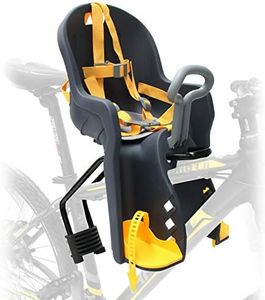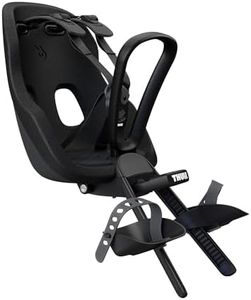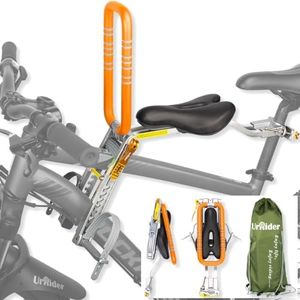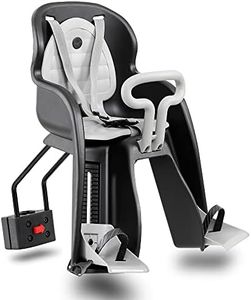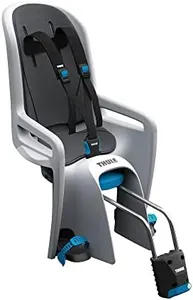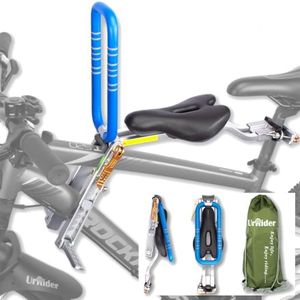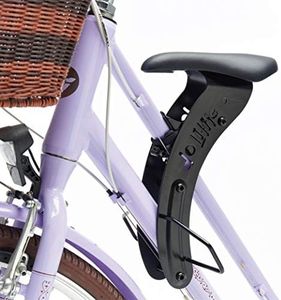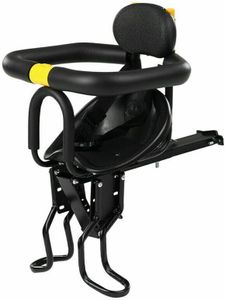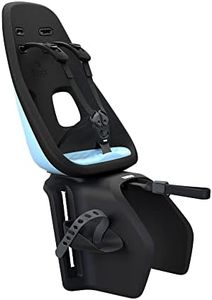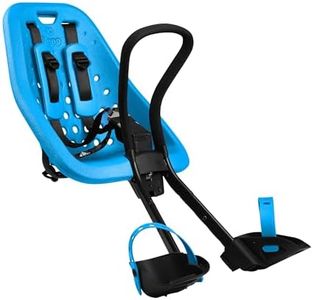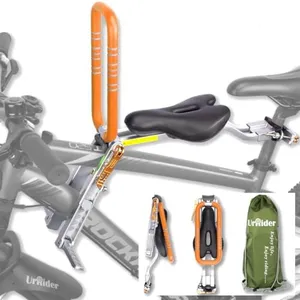We Use CookiesWe use cookies to enhance the security, performance,
functionality and for analytical and promotional activities. By continuing to browse this site you
are agreeing to our privacy policy
10 Best Toddler Bike Seats
From leading brands and best sellers available on the web.Buying Guide for the Best Toddler Bike Seats
Choosing a toddler bike seat can open a whole new way of exploring the world with your child, while also encouraging a love of cycling from an early age. It's important to focus on safety, comfort, age and weight suitability, and how the seat fits with your bike and lifestyle. Understanding the different types of seats and what features best suit your child’s needs will help ensure both you and your little one have a fun and secure ride.Mounting PositionMounting position refers to where the seat attaches to the bike—either in front of the rider (front-mounted) or behind (rear-mounted). This choice affects both your ride and your child's experience. Front-mounted seats allow you to keep an eye on your child and are generally best for younger or smaller toddlers, but may impact your ability to steer, especially if your bike has limited space. Rear-mounted seats, which sit above the back wheel, are suitable for older and larger toddlers and are generally considered safer for longer rides, though they may make it a little harder to communicate with your child while riding. Think about your comfort level, the kind of ride you anticipate, and your child’s size when choosing the mounting position.
Weight and Age LimitsThe weight and age limits indicate the maximum weight and recommended age a seat is designed to carry safely. This is important for your child’s safety and for protecting your bicycle. Some seats are suitable for younger toddlers from about 9 months up, while others are built for children up to 4 or 5 years old. Always check the manufacturer’s guidance and consider your child’s current size and anticipated growth so the seat will be a safe and comfortable fit for the foreseeable future.
Harness SystemThe harness system keeps your child securely fastened in the seat. It’s usually a three-point or five-point harness. A five-point harness offers more security with straps over the shoulders, around the waist, and between the legs, reducing the risk of your child wriggling free. For active or younger toddlers, opt for a harness system that is easy to adjust and secures your child snugly, while being simple for you to use. Consider the ease of buckling and unbuckling as well.
Footrests and StrapsFootrests provide a place for your child’s feet and help them sit comfortably while riding. Adjustable footrests can be customized as your child grows, and straps keep their feet secure and away from the bike’s moving parts. For growing children or longer rides, look for seats with adjustable, sturdy footrests and reliable straps to ensure safety and comfort throughout different stages.
Padding and ComfortPadding and overall seat design impact how comfortable your child will be during rides. Well-cushioned seats can make a big difference on bumpy roads or longer trips. Consider the amount and type of padding, and whether the materials are breathable, easy to clean, and able to stand up to the elements. If you plan on frequent or lengthy rides, prioritize a seat with ample padding and ergonomic support.
Bike CompatibilityNot all bike seats fit every bike. Bike compatibility refers to whether the seat can be securely installed on your specific bike’s frame or rack. Check if your bike’s frame and wheels can handle the seat, the mounting hardware, and the combined weight of the seat and your child. If you have a unique or performance bike (like a road bike or mountain bike), double-check compatibility to ensure a safe, stable installation.
Ease of Installation and RemovalThe ease of installation and removal impacts how often and how conveniently you can use the bike seat. Some seats are designed for quick-release, allowing you to take the seat off when not needed, while others require more time and tools. If you intend to switch the seat between bikes or remove it regularly, look for models with user-friendly mounting systems.
